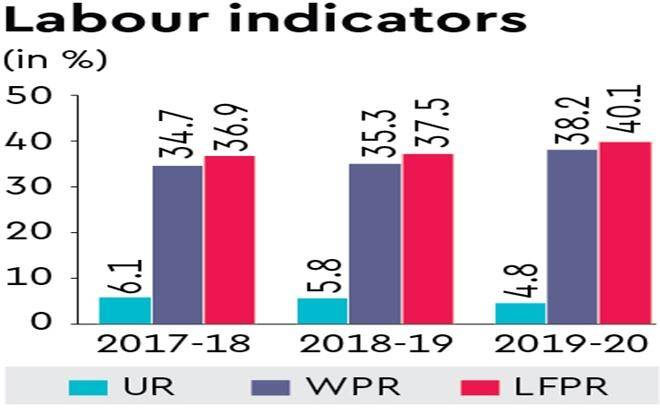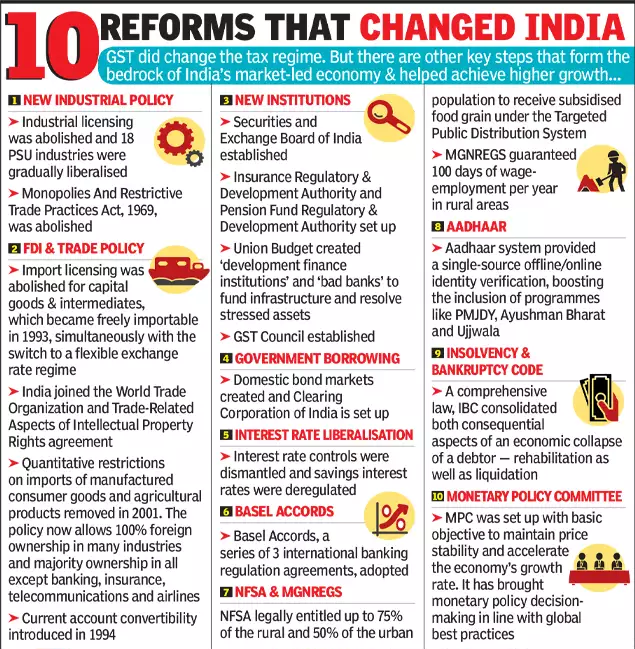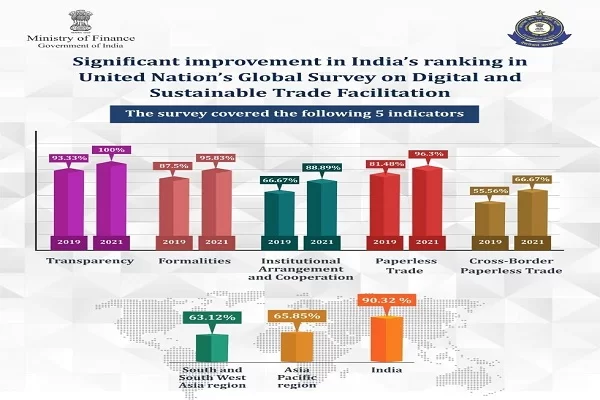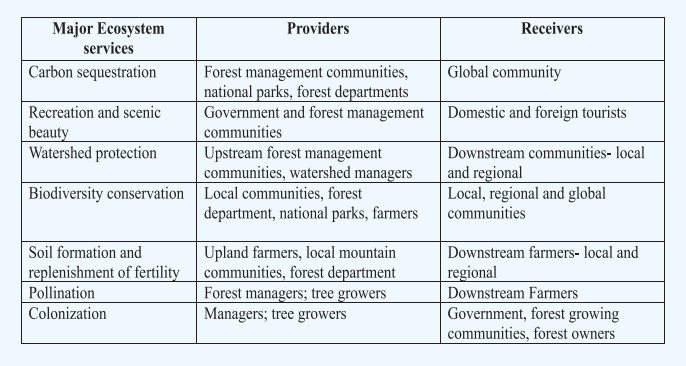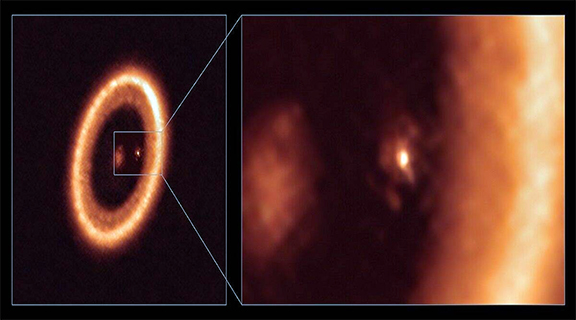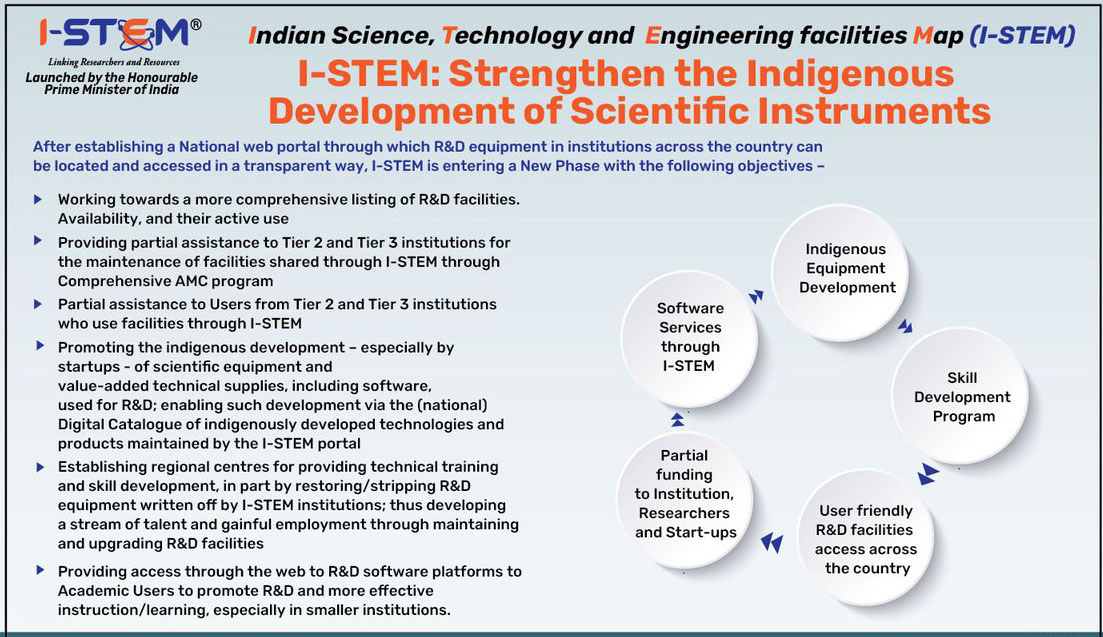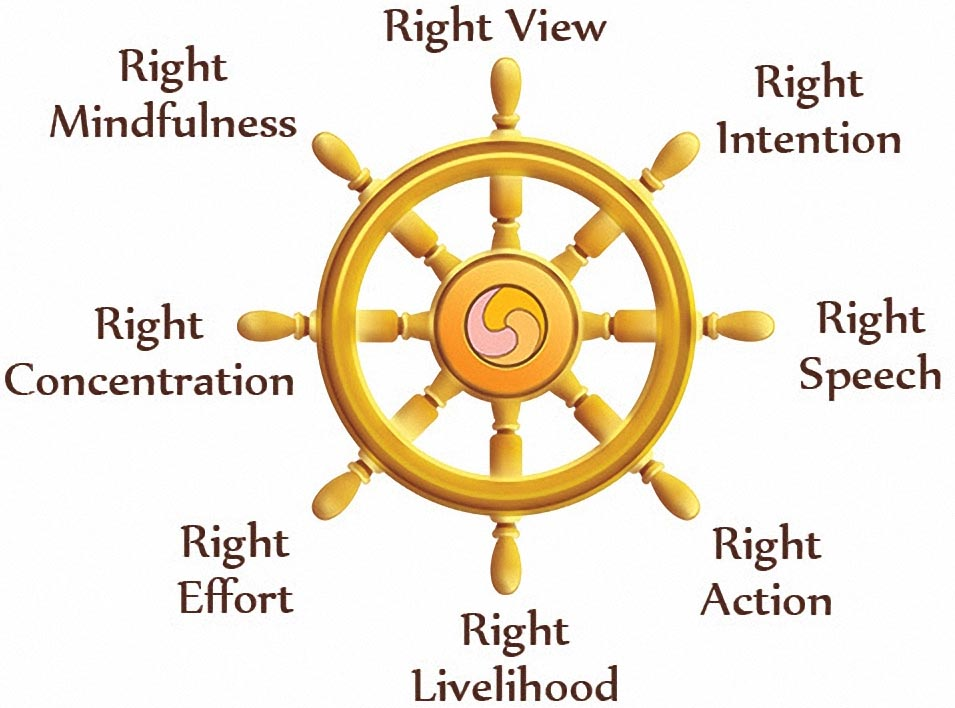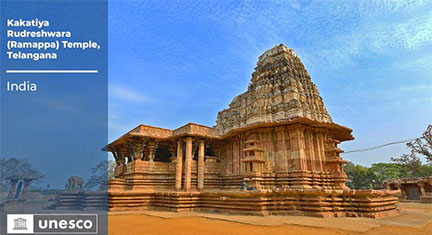Indian Polity
Right to be Forgotten
Why in News
Recently, a reality show contestant has approached the Delhi High Court with a plea seeking the removal of his videos, photographs and articles etc. from the internet citing his “Right to be Forgotten (RTBF)”.
- In the plea, the petitioner also maintains that the “Right to be Forgotten” goes in sync with the “Right to Privacy”, which is an integral part of Article 21 of the Constitution (Right to Life).
Key Points
- About:
- Right to be Forgotten (RTBF): It is the right to have publicly available personal information removed from the internet, search, databases, websites or any other public platforms, once the personal information in question is no longer necessary, or relevant.
- Origin: The RTBF gained importance after the 2014 decision of the Court of Justice of the European Union (“CJEU”) in the Google Spain case.
- RTBF has been recognised as a statutory right in the European Union under the General Data Protection Regulation (GDPR).
- It has been upheld by a number of courts in the United Kingdom, and in Europe.
- Status in India: In India, there is no law that specifically provides for the right to be forgotten. However, the Personal Data Protection Bill 2019 recognised this right.
- Information Technology Act, 2000 provides for safeguard against certain breaches in relation to data from computer systems.
- It contains provisions to prevent the unauthorized use of computers, computer systems and data stored therein.
- Information Technology Act, 2000 provides for safeguard against certain breaches in relation to data from computer systems.
- Personal Data Protection Bill and RTBF:
- In December, 2019, the Personal Data Protection Bill was introduced in Lok Sabha. It aims to set out provisions meant for the protection of the personal data of individuals.
- Clause 20 under Chapter V of this draft bill titled “Rights of Data Principal” mentions the “Right to be Forgotten.”
- It states that the “data principal (the person to whom the data is related) shall have the right to restrict or prevent the continuing disclosure of his personal data by a data fiduciary”.
- Therefore, broadly, under the Right to be forgotten, users can de-link, limit, delete or correct the disclosure of their personal information held by data fiduciaries.
- A data fiduciary means any person, including the State, a company, any juristic entity or any individual who alone or in conjunction with others determines the purpose and means of processing of personal data.
- Data Protection Authority (DPA): Even so, the sensitivity of the personal data and information cannot be determined independently by the person concerned, but will be overseen by the Data Protection Authority (DPA).
- This means that while the draft bill gives some provisions under which a data principal can seek that his data be removed, his or her rights are subject to authorisation by the Adjudicating Officer who works for the DPA.
- While assessing the data principal’s request, this officer will need to examine the sensitivity of the personal data, the scale of disclosure, degree of accessibility sought to be restricted, role of the data principal in public life and the nature of the disclosure among some other variables.
- Right to Privacy and RTBF:
- The RTBF falls under the purview of an individual’s right to privacy, which is governed by the Personal Data Protection Bill, 2019.
- In 2017, the Right to Privacy was declared a fundamental right by the Supreme Court in its landmark Puttaswamy case verdict.
- The court said that, “the right to privacy is protected as an intrinsic part of the right to life and personal liberty under Article 21 and as a part of the freedoms guaranteed by Part III of the Constitution”.
Challenges
- Conflict with Public Record: Right to be forgotten may get into conflict with matters involving public records.
- For instance, judgments have always been treated as public records and fall within the definition of a public document according to Section 74 of the Indian Evidence Act, 1872.
- The RTBF cannot be extended to official public records, especially judicial records as that would undermine public faith in the judicial system in the long run.
- Individual vs Society: Right to be forgotten creates a dilemma between the right to privacy of individuals and the right to information of society and freedom of press.
Way Forward
- There must be a balance between the right to privacy and protection of personal data (Article 21) and the freedom of information of internet users (Article 19).
- A comprehensive data protection law must address these issues and minimize the conflict between the two fundamental rights that form the crucial part of the golden trinity (Articles 14,19 and 21) of the Indian constitution.
Indian Economy
Periodic Labour Force Survey 2019-20
Why in News
Recently, the National Statistical Office (NSO) released the third annual report on Periodic Labour Force Survey (PLFS), conducted between July 2019 and June 2020.
- Labour indicators recorded an all-round improvement in 2019-20 compared with the previous two years i:e 2017-18 and 2018-19.
National Statistical Office
- It is the central statistical agency of the Government mandated under the Statistical Services Act 1980 under the Ministry of Statistics and Programme Implementation.
- It is responsible for the development of arrangements for providing statistical information services to meet the needs of the Government and other users for information on which to base policy, planning, monitoring and management decisions.
- The services include collecting, compiling and disseminating official statistical information.
- Other Reports & Indices by NSO:
Key Points
- Unemployment Rate:
- The unemployment rate fell to 4.8% in 2019-20. In 2018-19, it stood at 5.8% and 6.1% in 2017-18.
- Worker Population Rate:
- It improved to 38.2% in 2019-20 compared with 35.3% in 2018-19 and 34.7% in 2017-18.
- Labour Force Participation Ratio:
- It increased to 40.1% in 2019-20 from 37.5% and 36.9%, respectively, in the last two years. The higher the LFPR, the better.
- Gender Based Unemployment Rate:
- The data showed the jobless rate for both male and female fell to 5.1% and 4.2%, respectively, in 2019-20 from 6% and 5.2% in 2018-19.
- WPR and LFPR also comparatively improved during the year.
- The data showed the jobless rate for both male and female fell to 5.1% and 4.2%, respectively, in 2019-20 from 6% and 5.2% in 2018-19.
- Periodic Labour Force Survey:
- About:
- It is India’s first computer-based survey launched by the NSO in 2017.
- It has been constituted based on the recommendation of a committee headed by Amitabh Kundu.
- It essentially maps the state of employment in the country. In doing so, it collects data on several variables such as the level of unemployment, the types of employment and their respective shares, the wages earned from different types of jobs, the number of hours worked etc.
- Before PLFS, the National Sample Survey Office (NSSO)- previous name of NSO used to bring the data related to employment and unemployment based on its quinquennial (every 5 year) household socio-economic survey programme.
- Objective:
- To estimate the key employment and unemployment indicators (viz. WPR, LFPR, UR) in the short time interval of three months for the urban areas only in the Current Weekly Status (CWS).
- To estimate employment and unemployment indicators in both usual status and CWS in both rural and urban areas annually.
- About:
- Recent Government Initiatives to Tackle Unemployment:
- The Union government has come up with an economic stimulus package under Atmanirbhar Bharat Abhiyan to support the Indian economy and create jobs.
- Under the Pradhan Mantri Street Vendor's Atma Nirbhar Nidhi (PM SVANidhi), the Union Government is providing affordable loans to street vendors.
- In 2020 the government allocated an additional fund of Rs 40,000 crore for MGNREGA, as part of the stimulus package.
- The government is offering credit guarantees for Micro, Small and Medium Enterprises (MSMEs) which will help them in getting loans easily and boost their functioning.
- Pradhan Mantri Mudra Yojana to provide financial support to entrepreneurs to start small enterprises.
- Various other initiatives have also been taken by the government to support the economy which includes relaxation in Companies Act and Insolvency proceedings, reforms in agri- marketing etc.
- Government has also taken initiatives such as the New Code on Wages, 2019 to reduce gender-based discrimination in wages, recruitment and conditions of employment.
- State governments have also come up with the initiative to support their economy and increase jobs.
- Andhra Pradesh government’s ‘ReStart’ programme to support the MSME sector in the State.
- Jharkhand has launched three employment schemes to create wage employment for workers in rural areas.
- The Union government has come up with an economic stimulus package under Atmanirbhar Bharat Abhiyan to support the Indian economy and create jobs.
Key Terms
- Unemployment Rate (UR):
- It is defined as the percentage of persons unemployed among the persons in the labour force.
- Labour Force Participation Rate (LFPR):
- It is defined as the percentage of persons in the labour force (i.e. working or seeking or available for work) in the population.
- Worker Population Ratio (WPR):
- It is defined as the percentage of employed persons in the population.
- Activity Status:
- The activity status of a person is determined on the basis of the activities pursued by the person during the specified reference period.
- Usual Status: The activity status determined on the basis of the reference period of the last 365 days preceding the date of survey, it is known as the usual activity status of the person.
- Current Weekly Status (CWS): The activity status determined on the basis of a reference period of the last 7 days preceding the date of survey is known as the current weekly status (CWS) of the person.
- The activity status of a person is determined on the basis of the activities pursued by the person during the specified reference period.
Indian Economy
30 Years of Economic Liberalisation
Why in News
Recently, on the 30th anniversary of the economic liberalisation reforms, former Prime Minister of India, Manmohan Singh, raised concerns over the macro-economic stability of the country.
- According to him, the current economic crisis triggered by the Covid-19 pandemic is more challenging than during the 1991 economic crisis and the nation would need to recalibrate its priorities to ensure a dignified life for all Indians.
Key Points
- 1991 Crisis & Reforms:
- 1991 Crisis: In 1990-91, India faced a severe Balance of Payments (BOP) crisis, where its foreign exchange reserves were just adequate to finance 15 days of imports. There were many factors that led to the BOP crisis:
- Fiscal Deficit: The fiscal deficit during 1990-91 was around 8.4% of GDP.
- Gulf War I: In 1990-91, the situation was aggravated by the rise in the price of oil due to Iraq’s invasion of Kuwait.
- Rise in Prices: The inflation rate increased from 6.7% to 16.7% due to a rapid increase in money supply and the country’s economic position became worse.
- Nature and Scope of 1991 Reforms: In order to get out of the macro-economic crisis in 1991, India launched a New Economic Policy, which was based on LPG or Liberalisation, Privatisation and Globalisation model.
- Then Finance Minister, Manmohan Singh, was the prime architect of the historic 1991 liberalisation.
- The broad range of reforms under the LPG model included:
- Liberalising Industrial Policy: Abolition of industrial license permit raj, Reduction in import tariffs, etc.
- Beginning of Privatisation: Deregulation of markets, Banking reforms, etc.
- Globalisation: Exchange rate correction, liberalising foreign direct investment and trade policies, Removal of mandatory convertibility cause, etc.
- These reforms are credited and applauded for the high economic growth seen from 1991 to 2011 and substantial reduction of poverty from 2005 to 2015.
- 1991 Crisis: In 1990-91, India faced a severe Balance of Payments (BOP) crisis, where its foreign exchange reserves were just adequate to finance 15 days of imports. There were many factors that led to the BOP crisis:
- 2021 Crisis:
- The World Economic Outlook Report 2021, states that the Indian economy is expected to grow by 12.5% in 2021 and 6.9% in 2022.
- However, the pandemic has massive unemployment in the informal sector and poverty is increasing after decades of decline.
- The social sectors of health and education have lagged behind and not kept pace with our economic progress.
- Too many lives and livelihoods have been lost that should not have been, during the pandemic.
- Inspector Raj is set to make a comeback through the policy for e-commerce entities.
- India is back to the old habits of borrowing excessively or extracting money (in form of dividends) from the RBI to finance the fiscal deficit.
- The migrant labour crisis has laid bare the gaps in the growth model.
- India foreign trade policy is again suspecting trade liberalisation, as India has already decided to opt-out of the 16-nation Regional Comprehensive Economic Partnership (RCEP) trade deal.
- The World Economic Outlook Report 2021, states that the Indian economy is expected to grow by 12.5% in 2021 and 6.9% in 2022.
Way Forward
The 1991 reforms helped the economy stave off a crisis and then bloom. It is time to outline a credible new reform agenda that will not just bring GDP back to pre-crisis levels, but also ensure growth rates higher than it had when it entered the pandemic.
Indian Economy
UN’s Survey on Digital and Sustainable Trade Facilitation 2021
Why in News
Recently, India has scored 90.32% in United Nations Economic and Social Commission for Asia Pacific's (UNESCAP) Global Survey on Digital and Sustainable Trade Facilitation.
- This is a remarkable jump from 78.49% in 2019.
Key Points
- About Survey:
- The survey is conducted every two years by UNESCAP and includes an assessment of 58 trade facilitation measures covered by the World Trade Organization’s Trade Facilitation Agreement.
- 58 measures include publications of existing import-export rules on the internet, risk management, advance ruling on tariff classification, pre-arrival processing, independent appeal mechanism, expedited shipments, automated customs system, among others.
- A higher score for a country helps businesses in their investment decisions.
- The UN Regional Commissions jointly conduct the UN Global Survey on Digital and Sustainable Trade Facilitation.
- The Survey currently covers 143 economies around the globe. For Asia Pacific, it is conducted by UNESCAP.
- Assessment of India:
- It pointed out India’s improvement in the scores on all five key indicators.
- Transparency: 100% in 2021 (from 93.33% in 2019)
- Formalities: 95.83% in 2021 (from 87.5% in 2019)
- Institutional Arrangement and Cooperation: 88.89% in 2021 (from 66.67% in 2019)
- Paperless Trade: 96.3% in 2021 (from 81.48% in 2019).
- Cross-Border Paperless Trade: 66.67% in 2021 (from 55.56% in 2019).
- Comparison with Other Countries:
- India is the best performing nation as compared to the South and South West Asia region (63.12%) and Asia Pacific region (65.85%).
- The overall score of India is also greater than many OECD (Organisation for Economic Cooperation and Development) countries including France, UK, Canada, Norway, Finland etc. and the overall score is greater than the average score of the EU (European Union).
- Cause of Improvement:
- The CBIC (Central Board of Indirect Taxes and Customs) has been at forefront of path breaking reforms under the umbrella of ‘Turant’ Customs to usher in a Faceless, Paperless and Contactless Customs by way of a series of reforms.
- During the Covid-19 pandemic, Customs formations worked to expedite imports such as oxygen-related equipment, life-saving medicines, vaccines etc.
- It pointed out India’s improvement in the scores on all five key indicators.
United Nations’ Economic and Social Commission for Asia and the Pacific
- About: It is a regional development arm of the United Nations for the Asia-Pacific region.
- Members: It has 53 Member States and 9 Associate Members from Asia-Pacific Region. India is also a member.
- Established: 1947
- Headquarters: Bangkok, Thailand
- Objective: To overcome some of the region’s greatest challenges by providing results-oriented projects, technical assistance and capacity building to member States.
- Recent report: ‘Economic and Social Survey of Asia and the Pacific 2021: Towards post-Covid-19 resilient economies’.
Biodiversity & Environment
G20 Energy and Climate Meet
Why in News
At the recent G20 Climate Meet, India urged the group of 20 nations (G20) having per capita greenhouse gas (GHG) emissions above the global average to bring it down to the world average, thereby vacating ‘some' carbon space for developing nations.
- This will support the developmental aspirations of the developing nations.
- Presently, Italy holds the G20 Presidency and the Climate Meet is being seen as a prelude to the UN Climate Change Conference of Parties (COP 26) meeting in Glasgow, Scotland in November 2021.
G20
- The G20 is an informal group of 19 countries and the European Union, with representatives of the International Monetary Fund and the World Bank.
- The G20 membership comprises a mix of the world’s largest advanced and emerging economies, representing about two-thirds of the world’s population, 85% of global gross domestic product, 80% of global investment and over 75% of global trade.
- The members of the G20 are Argentina, Australia, Brazil, Canada, China, France, Germany, India, Indonesia, Italy, Japan, Republic of Korea, Mexico, Russia, Saudi Arabia, South Africa, Turkey, the United Kingdom, the United States and the European Union.
- It does not have any permanent secretariat or headquarters.
Key Points
- India's Stand:
- There is a need to cut absolute emissions rapidly while taking into account the Paris Agreement which emphasized on:
- Respective historical responsibilities,
- Delivery of promised climate finance and technologies at low cost keeping in perspective per capita emissions,
- Differences in per capita GDP (Gross Domestic Product) and
- The unfinished agenda for sustainable development.
- India noted the pledges made by some countries to achieve Net Zero GHG emissions or carbon Neutrality by or around mid century.
- However, this may not be adequate in view of fast depleting available carbon space.
- Keeping in view the legitimate need of developing countries to grow, it urged G20 countries to commit to bringing down per capita emissions to Global average by 2030.
- Carbon neutrality means having a balance between emitting carbon and absorbing carbon from the atmosphere in carbon sinks.
- Carbon space is the amount of carbon (or CO2) that can be put into the atmosphere without this leading to a level of warming—or underlying concentrations of CO2—that can be considered dangerous or otherwise undesirable.
- Stressed on Common But Differentiated Responsibilities (CBDR) to combat climate change.
- Mentioned its plans of installing 450 GW (Giga Watt) of RE (Renewable Energy) by 2030, enhanced ambitions in bio-fuels, India’s NDCs (Nationally Determined Contributions) and various other initiatives taken by India on Urban Climate Action.
- There is a need to cut absolute emissions rapidly while taking into account the Paris Agreement which emphasized on:
Common But Differentiated Responsibilities (CBDR)
- Common But Differentiated Responsibilities (CBDR) is a principle within the United Nations Framework Convention on Climate Change (UNFCCC).
- It acknowledges different capabilities and differing responsibilities of individual countries in addressing climate change.
- The principle of ‘common but differentiated responsibility’ evolved from the notion of the ‘common heritage of mankind’.
- The principle of CBDR is enshrined in Earth Summit 1992, held in Rio de Janeiro, Brazil.
- CBDR is based on two elements of responsibilities:
- One is the common responsibility of all the states to cater to the concerns of environmental protection and sustainable development.
- Another is of differentiated responsibility enabling the states to act, for environment protection, in their national capacity and as per their national priority.
- The principle recognizes historical differences in the contributions of developed and developing States to global environmental problems and differences in their respective economic and technical capacity to tackle these problems.
- India’s initiatives under Urban Climate Action:
- Climate Smart Cities Assessment Framework (CSCAF): CSCAF initiative intends to inculcate a climate-sensitive approach to urban planning and development in India.
- To provide a clear roadmap for cities towards combating Climate Change while planning and implementing their actions, including investments.
- National Mission on Sustainable Habitat is one of the eight missions under national climate change action plan and aims to make cities sustainable through improvements in energy efficiency in buildings, management of solid waste & shift to public transport.
- Climate Practitioners India Network (CPIN): It is first-of-its-kind network developed by Climate Centre for Cities (C-Cube) to support Cities and Practitioners across India.
- C-Cube wants to create a platform for Climate Practitioners across all cities in India to collaborate and contribute towards implementing Climate Actions.
- Urban Forestry: The government of India in 2020 launched the Nagar Van Scheme. The Nagar Van (Urban Forests) aims to develop 200 Urban Forests across the country in the next five years.
- Urban forestry is defined as the planting, maintenance, care and protection of tree populations in urban settings.
- Climate Smart Cities Assessment Framework (CSCAF): CSCAF initiative intends to inculcate a climate-sensitive approach to urban planning and development in India.
- India led Global Collaborations to Fight Climate Change:
Way Forward
- Resolving Development-Climate Change Dilemma: The present dilemma is to decarbonise while meeting development goals of a developing country like India.
- Therefore, what is important is that the new investments go in the direction of decarbonising, but only after taking into account possible synergies and trade-offs with other development objectives.
- Climate Change, a Global Collective Action Problem: Global community should not be shifting goalposts and setting new benchmarks for global climate ambition.
- There is a need to recognise climate change as a global collective action problem and must be combated ‘as per respective capabilities and national circumstances’.
- Disaster Preparedness: Disasters can not be stopped but well-preparedness and strong climate change mitigation policies can definitely help prevent a huge amount of loss.
- Convergent Approach: Sustainable growth depends on timely climate action and for that to happen, policymaking needs to have a convergent approach regarding carbon emissions, atmospheric warming, melting glaciers, extreme floods and storms.
Biodiversity & Environment
Gross Environment Product (GEP)
Why in News
Recently, the Uttarakhand government has announced that it will initiate valuation of its natural resources in the form of ‘Gross Environment Product’ (GEP).
- It is along the lines of Gross Domestic Product (GDP). GDP gives the economic output from the consumers’ side. It is the sum of private consumption, gross investment in the economy, government investment, government spending and net foreign trade (the difference between exports and imports).
Key Points
- About GEP:
- It was established back in 1997 by ecological economists like Robert Costanza at the global level.
- It is an assessment system to measure ecological status.
- It is considered as the product and service value that the ecosystem provides for human welfare and economic and social sustainable development, including provisioning, regulating and cultural ecosystem services.
- Overall, GEP accounts for the economic value of the ecosystem in providing products and services, and it is one of the components of green GDP.
- Green GDP is an indicator of economic growth with environmental factors taken into consideration along with the standard GDP of a country. It factors biodiversity losses and costs attributed to climate change.
- The term “ecosystem services” was coined in 1981 to attract academics towards this aspect, its definition is still in the process of evolution.
- Ecosystems that can be measured include natural ecosystems such as forests, grassland, wetland, desert, freshwater and ocean, and artificial systems that are based on natural processes like farmland, pastures, aquaculture farms and urban green land, etc.
- Need:
- Uttarakhand, through its biodiversity, gives services to the tune of Rs 95,112 crore per year to the nation.
- The state has over 71% area under forests.
- It is also home to the Himalayas and also is the origin point of rivers like Ganga, Yamuna and Sharada as well as home to wildlife reserves like Corbett and Rajaji Tiger Reserves.
- Uttarakhand is a state which provides a lot of environment services and in continuity as a result of which, there is a natural degradation in those services.
- Significance:
- The value of ecosystem services is about twice as much as the global GDP. Therefore, it would help in the conservation of the environment and also help save us from the effects of climate change.
- Issues:
- The decision appears to be a welcome step, but going ahead with the jargon raises serious doubts on the intent of the government. It may confuse policy makers and negate the past efforts.
- The purpose of introducing GEP is not transparent.
- Is it a process of simple valuation of a state's ecological wealth, or to assess what part of the GDP it contributes.
- Is it an attempt to claim a budget from the centre against ecosystem services the state provides to the rest of the country and / or a process of providing benefits to its own residents.
Way Forward
- Instead of introducing a well-defined concept of ecosystem services, planting a new term with no clear-cut narrative invites serious doubts on the intention of the government.
- So, it is important that the state should be steady in approach, focussing on Ecosystem Services, which has global acceptance and a strong knowledge base.
Science & Technology
Moon-Forming Regions Around Exoplanets
Why in News
Recently, scientists for the first time have spotted a Moon-Forming Region around a planet beyond our solar system (Exoplanet).
Exoplanets
- An exoplanet or extrasolar planet is a planet outside the Solar System. The first confirmation of detection of exoplanets occurred in 1992. More than 4,400 exoplanets have been discovered till now.
- Exoplanets are very hard to see directly with telescopes. They are hidden by the bright glare of the stars they orbit. So, astronomers use other ways to detect and study exoplanets such as looking at the effects these planets have on the stars they orbit.
Key Points
- Observation & Findings:
- Scientists detected a disc of swirling material accumulating around two exoplanets seen orbiting a young star called PDS 70.
- PDS 70 is located a relatively close 370 light years from Earth.
- A light year is the distance light travels in a year, about 9.5 trillion km.
- It is called a circumplanetary disc, and it is from these that moons are born. The disc around PDS 70c (The Exoplanet), with a diameter about equal to the distance of the Earth to the sun, possesses enough mass to produce up to three moons the size of Earth's moon.
- PDS 70c orbits its star at 33 times the distance of the Earth from the sun, similar to the planet Neptune in our solar system.
- The orange-coloured star PDS 70, roughly the same mass as our Sun, is about 5 million years old. The two planets are even younger. Both planets are similar (although larger) to Jupiter, a gas giant.
- It was around one of the two planets, called PDS 70c, that a moon-forming disc was observed.
- Both planets are still in their youth and are at a dynamic stage in which they are still acquiring their atmospheres.
- Scientists detected a disc of swirling material accumulating around two exoplanets seen orbiting a young star called PDS 70.
- Instrument Used:
- They used the Atacama Large Millimeter/submillimeter Array (ALMA) observatory in Chile's Atacama desert. It is the most complex astronomical observatory ever built on Earth.
- Teams from North America, East Asia, and Europe merged projects to develop this breakthrough scientific instrument.
- It uses 66 high-precision dish antennas of two sizes: 54 of them are 12 meters across and 12 of them are 7 meters across.
- They used the Atacama Large Millimeter/submillimeter Array (ALMA) observatory in Chile's Atacama desert. It is the most complex astronomical observatory ever built on Earth.
- Other Moon Forming Regions:
- No circumplanetary discs had been found until now because all the known exoplanets resided in “mature” – fully developed – solar systems, except the two infant gas planets orbiting PDS 70.
- In our solar system, the impressive rings of Saturn, a planet around which more than 80 moons orbit, represent a relic of a primordial moon-forming disc.
- Planet & Moon Formation:
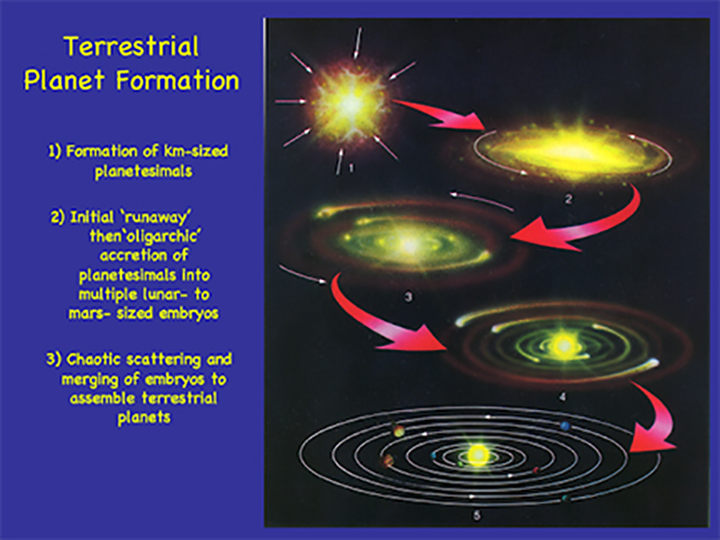
- Stars burst to life within clouds of interstellar gas and dust scattered throughout galaxies. Leftover material spinning around a new star then coalesces into planets, and circumplanetary discs surrounding some planets similarly yield moons.
- The dominant mechanism thought to underpin planet formation is called “core accretion''.
- Core accretion occurs from the collision and coagulation of solid particles into gradually larger bodies until a massive enough planetary embryo is formed (10-20 Earth masses) to accrete a gaseous envelope.
- In this scenario, small dust grains, coated in ice, gradually grow to larger and larger sizes through successive collisions with other grains.
- This continues until the grains have grown to a size of a planetary core, at which point the young planet has a strong enough gravitational potential to accrete gas which will form its atmosphere.
- Some nascent planets attract a disc of material around them, with the same process that gives rise to planets around a star leading to the formation of moons around planets.
Governance
I-STEM Enters Phase-II
Why in News
The Indian Science Technology and Engineering facilities Map (I-STEM) project has been accorded an extension for five years, until 2026 and enters its second phase with added features.
Key Points
- I-STEM:
- About:
- I-STEM is a National Web portal for sharing R&D (Research and Development) facilities.
- The portal facilitates researchers to access slots for the use of equipment, as well as to share the details of the outcomes, such as, patents, publications and technologies.
- Launch:
- Launched in January 2020. It is an initiative of Office of the Principal Scientific Adviser to the Government of India under the aegis of Prime Minister Science, Technology and Innovation Advisory Council (PM-STIAC) mission.
- PM-STIAC: It is an overarching Council that facilitates the Principal Scientific Adviser’s Office to assess the status in specific science and technology domains, comprehend challenges in hand, formulate specific interventions, develop a futuristic roadmap and advise the Prime Minister accordingly.
- Launched in January 2020. It is an initiative of Office of the Principal Scientific Adviser to the Government of India under the aegis of Prime Minister Science, Technology and Innovation Advisory Council (PM-STIAC) mission.
- Goal:
- The goal of I-STEM is to strengthen the R&D ecosystem of the country by connecting researchers with resources.
- Promoting technologies and scientific equipment development indigenously, and providing necessary supplies and support to researchers by enabling them an access to existing publicly funded R&D facilities in the country through the I-STEM web portal.
- Phase-I:
- In the first phase, the portal is listed with more than 20,000 pieces of equipment from 1050 institutions across the country and has more than 20,000 Indian researchers.
- About:
- Phase-II:
- The portal will host indigenous technology products listed through a digital catalogue. It will also host and provide access to selected R&D (Research and Development) software required to undertake research projects by students and scientists.
- The portal will also provide a platform for the various City Knowledge and Innovation Clusters to enhance effective use of R&D infrastructure through leveraging collaboration and partnership built on a shared STI (Science Technology and Innovation) ecosystem.
- New phase will be designed as a dynamic digital platform that will provide a boost to research and innovation especially for 2 tier and 3 tier cities and also for the emerging start-up ecosystem.
Indian Heritage & Culture
Asadha Poornima Dhamma Chakra Day
Why in News
Recently, India in partnership with International Buddhist Confederation (IBC) celebrated Asadha Poornima Dhamma Chakra Day 2021 on 24th July 2021.
- The day is also observed as Guru Poornima by both Buddhists and Hindus as a day to mark reverence to their Gurus.
Guru Purnima
- According to the Hindu calendar, Guru Purnima generally falls on a full-moon day in the Hindu month of Ashadh.
- It is dedicated to Maharshi Veda Vyasa, the sage who is believed to have edited the sacred Hindu text, the Vedas and created the 18 Puranas, Mahabharata and the Srimad Bhagavatam.
- For Buddhists, the festival marks the first sermon of Lord Buddha, which is said to have been delivered at Sarnath, Uttar Pradesh, on this very day.
- It is also believed to mark the onset of monsoons.
Key Points
- About:
- It commemorates Buddha's first sermon to his first five ascetic disciples. He gave his first knowledge to the world after attaining enlightenment.
- The day marks the establishment of the Sangha, on a full-moon day of the month of Asadha, in the Indian Sun calendar at the ‘Deer Park', Ṛṣipatana in the current day Sarnath, near Varanasi, India.
- It is also known as Esala Poya in Sri Lanka and Asanha Bucha in Thailand.
- It is the second most sacred day for Buddhists after the Buddha Poornima or Vesak.
- This teaching of Dhamma Chakka- PavattanaSutta (Pali) or Dharma chakra Pravartana Sutra (Sanskrit) is also known as the First Turning of Wheels of Dharma and comprises the Four Noble Truths and Noble Eightfold Path.
- The Rainy Season retreat (Varsha Vassa) for the Monks and Nuns also starts with this day lasting for three lunar months from July to October, during which they remain in a single place, generally in their temples (Viharas/Chaityas) dedicated to intensive meditation.
- Gautam Buddha:
- He is believed to be the eighth of the ten incarnations of Lord Vishnu (Dashavatar).
- He was born as Siddhartha Gautama in circa 563 BCE, in Lumbini and belonged to the Sakya clan.
- Gautam attained Bodhi (enlightenment) under a pipal tree at Bodhgaya, Bihar.
- Buddha gave his first sermon in the village of Sarnath, near Varanasi in Uttar Pradesh.
- He died at the age of 80 in 483 BCE at Kushinagara, Uttar Pradesh. The event is known as Mahaparinibban or Mahaparinirvana.
- Contribution of Buddhism to Indian Culture:
- The concept of ahimsa was its chief contribution. Later, it became one of the cherished values of our nation.
- Its contribution to the art and architecture of India was notable. The stupas at Sanchi, Bharhut, and Gaya are wonderful pieces of architecture.
- It promoted education through residential universities like those at Taxila, Nalanda, and Vikramasila.
- The language of Pali and other local languages developed through the teachings of Buddhism.
- It had also promoted the spread of Indian culture to other parts of Asia.
- Buddhism’s Relevance in Covid-19:
- Buddha’s teaching is relevant today when humanity faces the Covid-19 pandemic as the biggest challenge before it. Buddha's principles bind countries together, strengthening humanity.
- Today, the nations of the world are also holding each other's hands and helping each other in the times of pandemic, following the path of service to humanity as shown by Buddha.
- Buddha’s four noble truths and eightfold path can help understand the doctrine of Karma and can help in healing the world and make it a better place.
- UNESCO’s Heritage Sites Related to Buddhism:
- Archaeological Site of Nalanda Mahavihara at Nalanda, Bihar
- Buddhist Monuments at Sanchi, MP
- Maha Bodhi Temple Complex at Bodh Gaya, Bihar
- Ajanta Caves Aurangabad, Maharashtra.
Important Facts For Prelims
India’s 39th World Heritage Site: Ramappa Temple
Why in News
Recently, Rudreswara Temple, (also known as the Ramappa Temple) at Mulugu district, Telangana has been inscribed on UNESCO's World Heritage list.
- Ramappa Temple was proposed by the government as its only nomination for the UNESCO World Heritage site tag for the year 2019.
Key Points
- About Rudreswara (Ramappa) Temple:
- The Rudreswara temple was constructed in 1213 AD during the reign of the Kakatiya Empire by Recherla Rudra, a general of Kakatiya king Ganapati Deva.
- The presiding deity here is Ramalingeswara Swamy.
- It is also known as the Ramappa temple, after the sculptor who executed the work in the temple for 40 years.
- The temple stands on a 6 feet high star-shaped platform with walls, pillars and ceilings adorned with intricate carvings that attest to the unique skill of the Kakatiya sculptors.
- The foundation is built with the “sandbox technique”, the flooring is granite and the pillars are basalt.
- The lower part of the temple is red sandstone while the white gopuram is built with light bricks that reportedly float on water.
- An inscription dates the temple to 1135 Samvat-Saka on the eight-day of Magha (12th January, 1214).
- The distinct style of Kakatiyas for the gateways to temple complexes, unique only to this region, confirm the highly evolved proportions of aesthetics in temple and town gateways in South India.
- European merchants and travellers were mesmerized by the beauty of the temple and one such traveller had remarked that the temple was the "brightest star in the galaxy of medieval temples of the Deccan".
- Sandbox Technique:
- The technique involved filling the pit — dug up for laying the foundation — with a mixture of sand-lime, jaggery (for binding) and karakkaya (black myrobalan fruit) before the buildings were constructed on these ‘sandboxes’.
- The sandbox in the foundation acts as a cushion in case of earthquakes.
- Most of the vibrations caused by earthquakes lose their strength while passing through the sand by the time they reach the actual foundation of the building.

